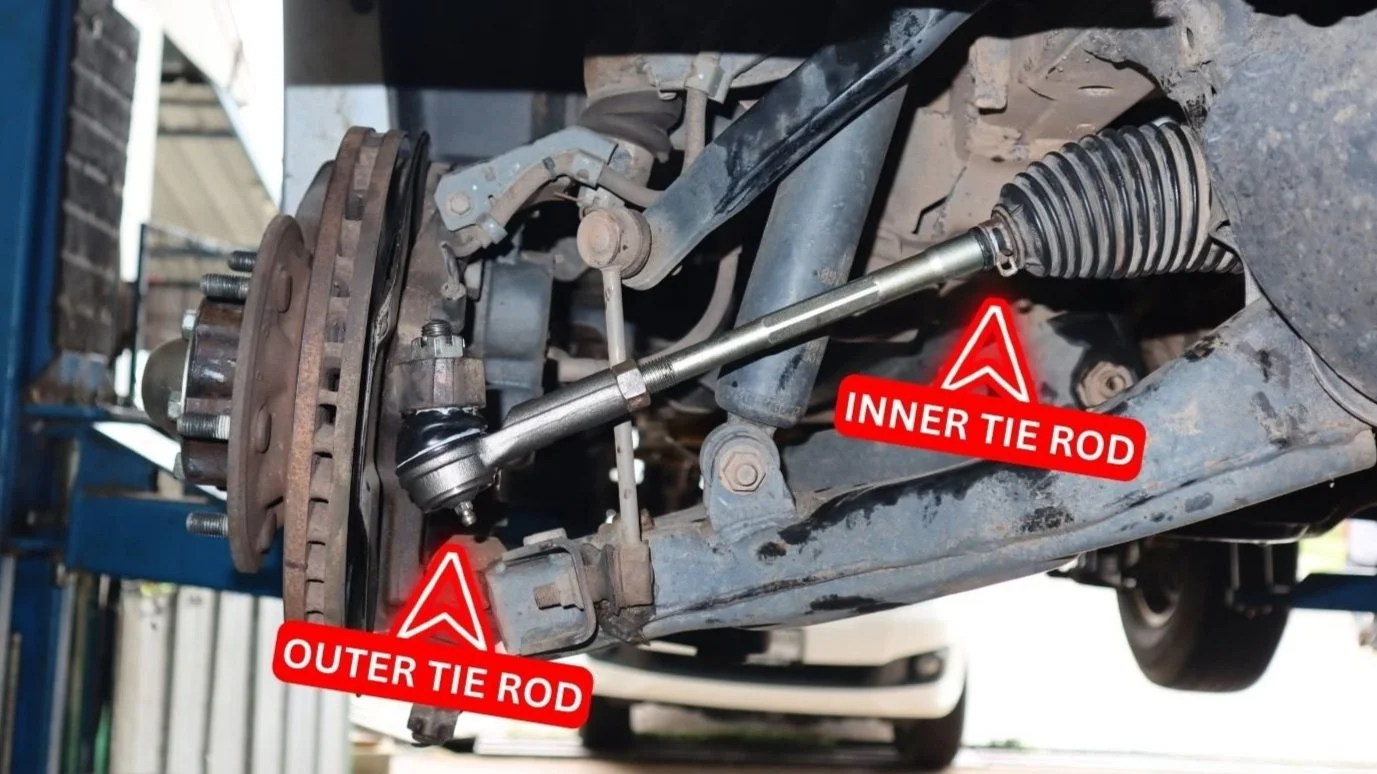5 SYMPTOMS OF A BAD TIE ROD
Tie rods serve an essential function in the steering system of a vehicle, as they are responsible for transferring the power generated by the rack-and-pinion or power steering box to the wheels, thereby enabling them to turn left or right as desired. In modern cars, the rack-and-pinion design has become increasingly prevalent, and tie rods are an integral component of this system. They play a crucial role in ensuring that the steering mechanism functions smoothly and responsively, allowing the driver to maintain control over the vehicle's direction and trajectory. Without properly functioning tie rods, the steering system may become compromised, leading to a range of safety issues and potentially dangerous situations on the road.
location
The inner tie rods are attached to the rack and pinion steering mechanism located near the center of the vehicle's front axle. On the other hand, the outer tie rods connect to the steering knuckle situated right behind each wheel.
On average, tie rods tend to have a lifespan of approximately 80,000 to 100,000 miles before they may need to be replaced. However, this can vary depending on factors such as driving conditions, vehicle make and model, and frequency of maintenance. Regular inspection and upkeep can help extend the life of your tie rods and prevent premature wear and tear, ensuring that your steering system continues to function effectively and safely for years to come.
Symptoms
steering wheel freeplay
When tie rods start to go bad, the first symptom you may notice is play in the steering wheels. This means that you can turn the steering wheel a few inches before the wheels actually begin to move. Typically, this occurs when the inner or outer tie rods wear out internally, causing a larger gap in the socket than there should be. In addition to the steering wheel freeplay, you may also experience shaking in the steering wheel when driving over bumps or rough roads.
vibration while driving
The second symptom of a bad tie rod that you could be experiencing is vibration while driving. You’ll feel the vibration get worse as you drive. This can happen if the tie rods start to wear out, creating a back-and-forth motion when driving. In some situations, you might encounter steer wander. Meaning, your car pulls to the left or the right on its own.
uneven tire wear
Another sign of a bad tie rod is uneven tire wear on your front tires. Specifically, some areas of the tire may become more worn out than others. Worn tie rods can create a back-and-forth motion in the steering system, causing the tires to wobble slightly and leading to uneven wear over time. This issue will only worsen the longer you continue driving with faulty tie rods, which can ultimately cause more significant damage to your tires and suspension components.
ruptured rubber casing
The fourth symptom of a bad tie rod is a ruptured rubber casing. When this happens the grease escapes allowing dirt and moisture to enter. This prevents the tie rods from working properly.
clunking noise
The last symptom of a bad tie rod is hearing a clunking noise. You’ll be able to hear it when turning your vehicle left or right. Clunking noise can appear if either the inner or outer tie rods are worn out.
Check out my YouTube video!
Disclaimer: Some links in this article may be affiliate links.







